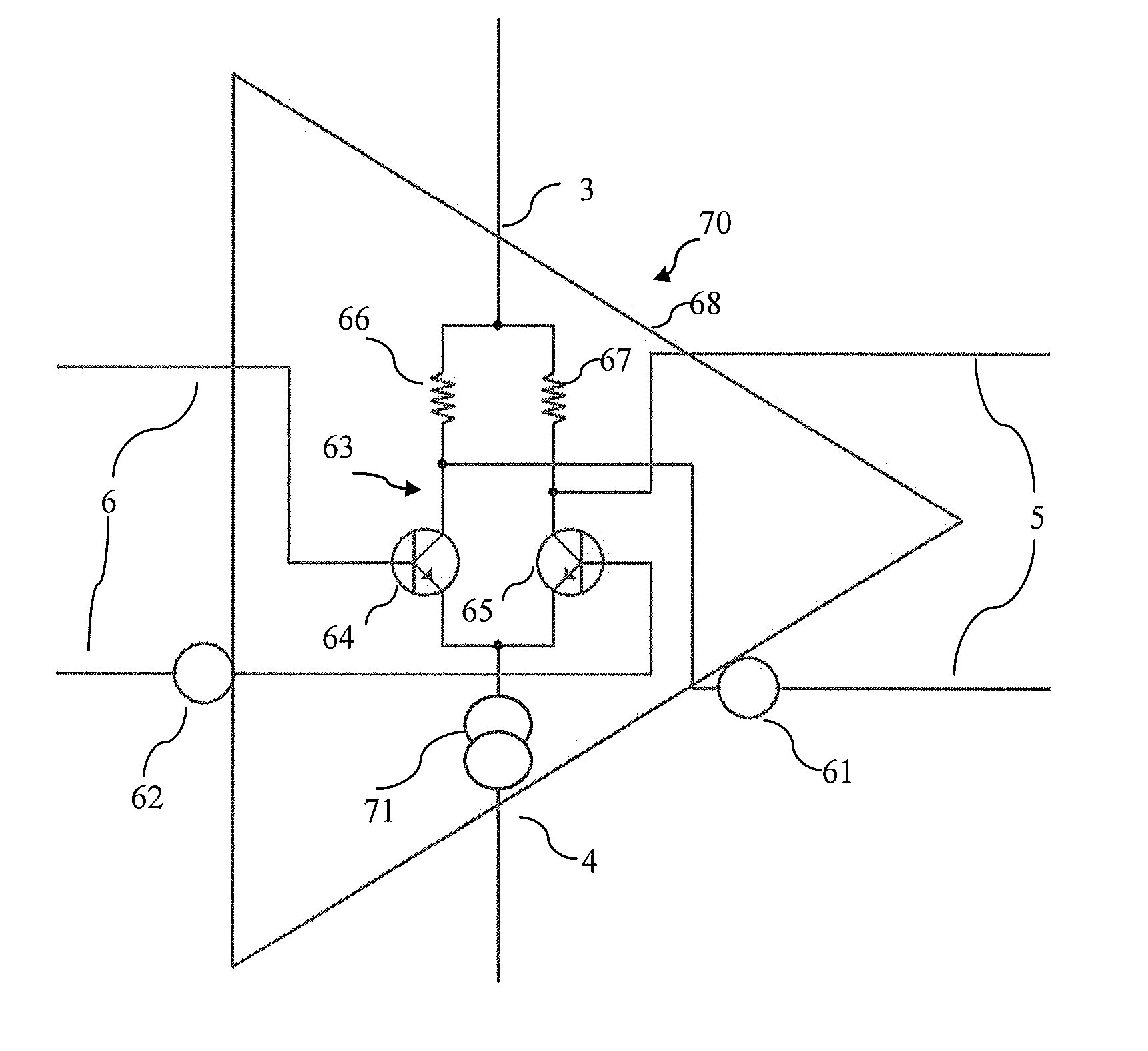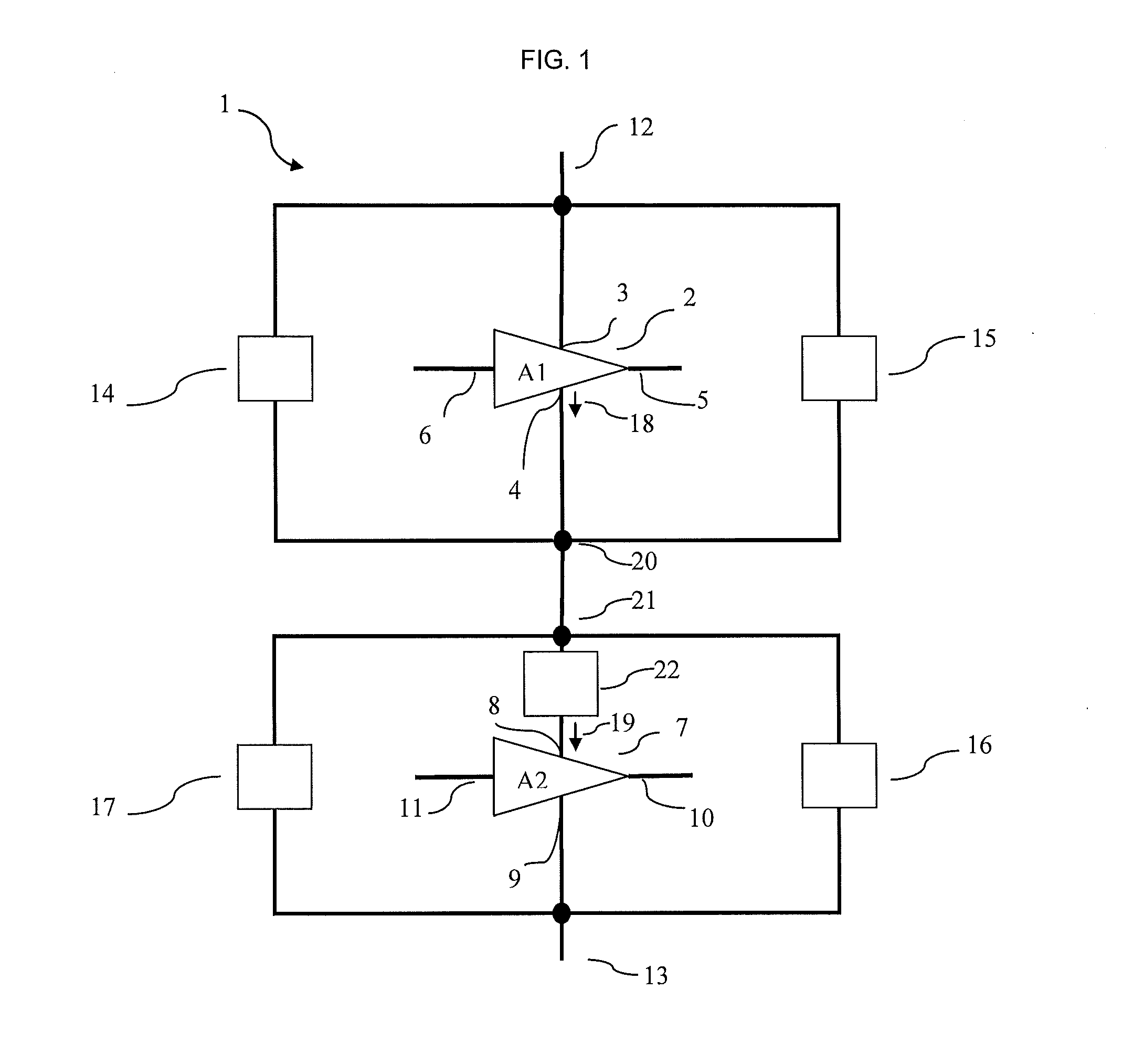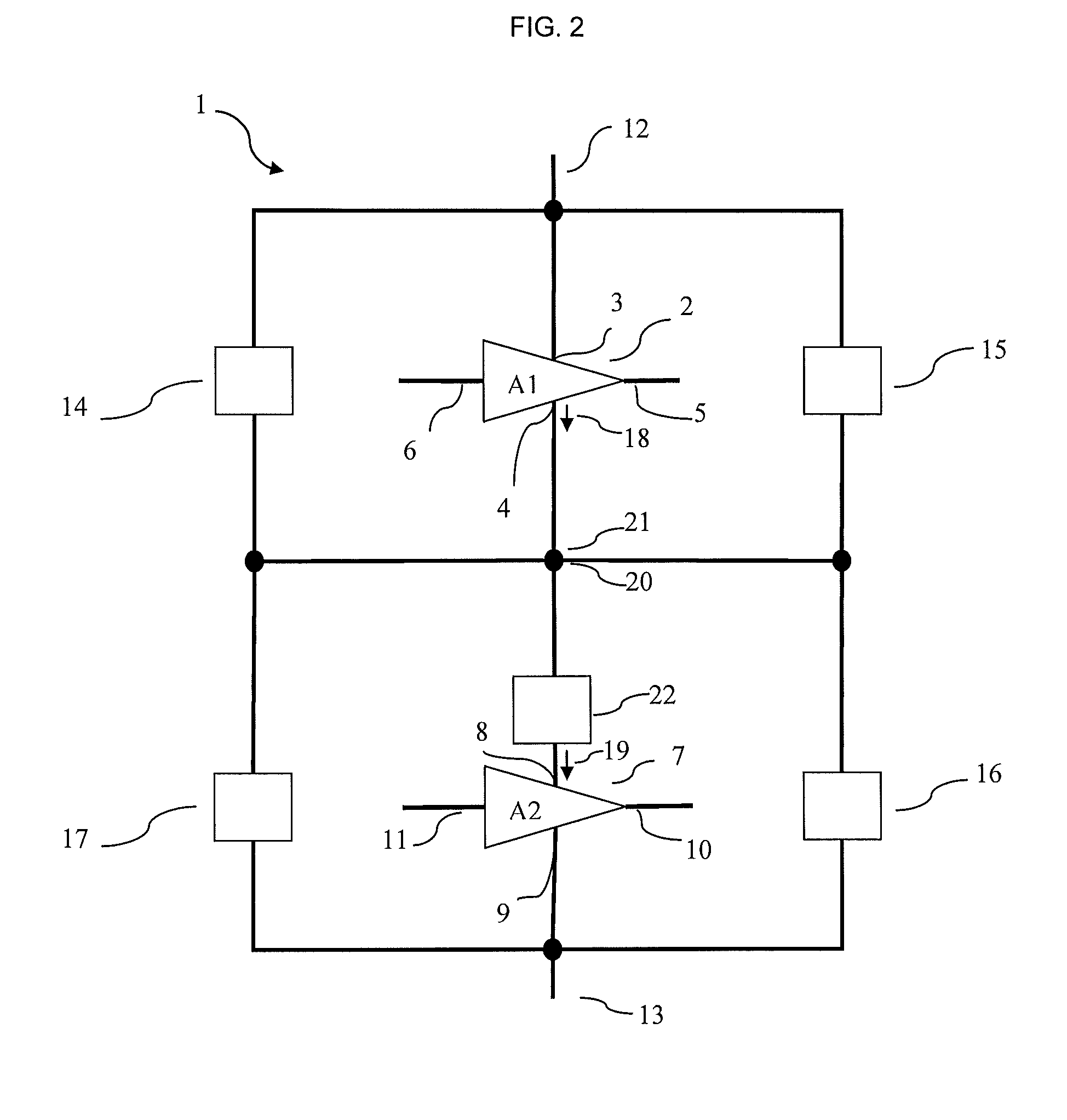Low power integrated circuit
a low-power, integrated circuit technology, applied in the direction of amplifiers, amplifiers with min 3 electrodes or 2 pn junctions, amplifiers, etc., can solve the problems of increasing the requirement of electronic components, the challenge of wire-based interconnect devices, and the difficulty of wire-based interconnects of the future, so as to improve the noise figure, increase the current consumption, and improve the effect of nois
- Summary
- Abstract
- Description
- Claims
- Application Information
AI Technical Summary
Benefits of technology
Problems solved by technology
Method used
Image
Examples
Embodiment Construction
[0055]In FIG. 1 the first amplifier 2 has a signal input 6, a signal output 5, an input supply port 3 and an output supply port 4. Similarly the second amplifier 7 has a signal input 11, a signal output 10, an input supply port 8 and an output supply port 9. The supply ports of the amplifiers are arranged to be supplied from the positive supply 12 and the negative supply 13. In the current example, as well as this text as a whole, positive and negative supply need not necessarily be supplies as such but in principle indicates a difference in potential in the positive supply relative to the negative supply suitable for supplying the necessary current and / or headroom to the circuit, often preferably sufficiently constant to provide a substantial constant performance of the first and second amplifiers. Accordingly, in one embodiment the circuit is implemented between a positive supply and ground. In one embodiment the circuit is implemented with additional circuitry above the indicated...
PUM
 Login to View More
Login to View More Abstract
Description
Claims
Application Information
 Login to View More
Login to View More - R&D
- Intellectual Property
- Life Sciences
- Materials
- Tech Scout
- Unparalleled Data Quality
- Higher Quality Content
- 60% Fewer Hallucinations
Browse by: Latest US Patents, China's latest patents, Technical Efficacy Thesaurus, Application Domain, Technology Topic, Popular Technical Reports.
© 2025 PatSnap. All rights reserved.Legal|Privacy policy|Modern Slavery Act Transparency Statement|Sitemap|About US| Contact US: help@patsnap.com



